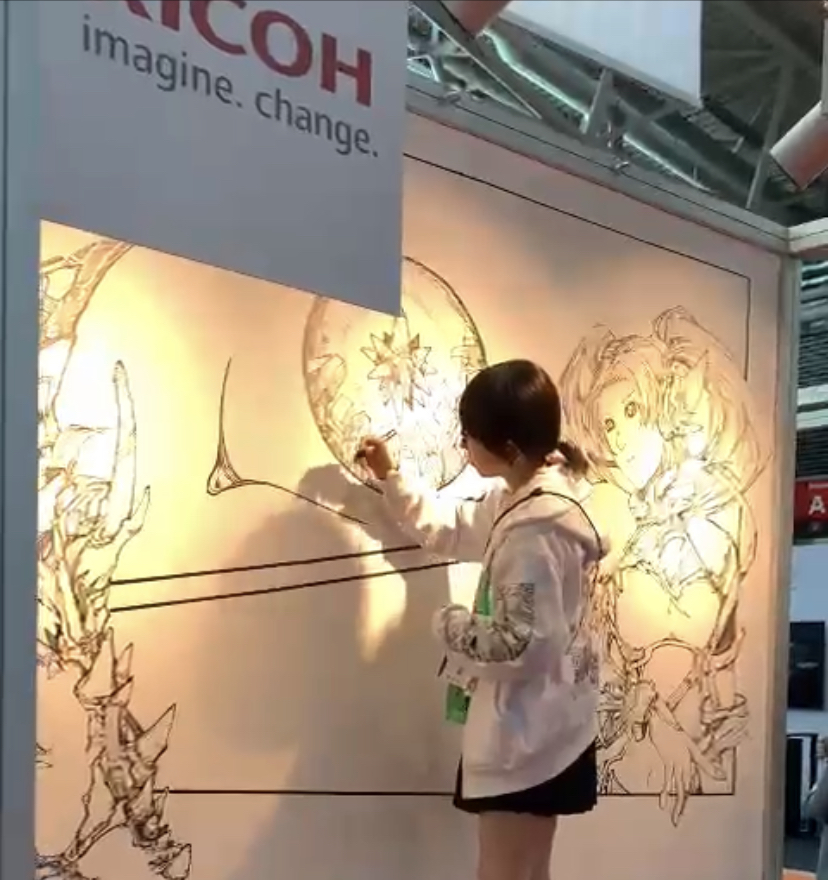At this year’s FESPA, celebrated manga artist Uchida spent four days transforming a 3 x 2 m canvas with her powerful black and white imagery that brought Japanese culture to life for the Munich showgoers.
People were photographing the artwork in order to print and then colour in the picture.
Manga, which is nearly always produced in black and white, has proven to be one of the big publishing success stories in recent years. The distinctive Anime filmstyle has become immensely popular far beyond Japan’s shores.
Words like ‘explosive growth’ and ‘unprecedented’ are now commonly used to describe the manga marketplace in North America. According to NPD Bookscan, first volumes of longtime manga bestselling series such as Attack on Titan, My Hero Academia, and Demon Slayer: Kimetsu no Yaiba sold more than 160,000 copies each in print in 2021, a year-on-year increase of over 25 per cent.
Almost all North American publishers reported stronger than usual sales for their midlist and backlist titles too. Erik Ko, publisher at the Canadian manga studio and publishing house Udon Entertainment, said 200 per cent more copies of the video game inspired Persona 3, Vol. 1 were sold in 2021 than the past seven years combined.
In Europe in 2021, the largest launch ever seen in manga comic production took place. Over 250,000 copies of the world’s biggest Japanese strip – ‘One Piece’ – were printed ahead of the release of the 100th edition and sold in French bookstores.
Since the pandemic Spaniards have been reading more books, especially manga related material. The market is dominated by publishers Planeta, Norma and Ivrea. In 2012, 90 per cent of new manga releases were in their hands. More recently, the number of medium and small-sized publishers in the country has been growing. In 2022, there were 29 publishers of manga.
However, challenges such as limited printing capacity, paper shortages, and other production and distribution problems are impacting manga publishing.
Unexpectedly, strong sales of both front and backlist titles have resulted in publishers seeing inventories that would usually last several months or years being sold out quickly and before they can order reprints. As such, many titles are being listed as unavailable.
This is where digital print on demand can deliver responsive, cost-effective short runs and runs of one. High speed inkjet and toner technologies offer enhanced production and application flexibility to quickly meet the demand for creative print. Intuitive and easily integrated software solutions support a complex job mix.
Harnessing the power of these technologies will enable manga publishers and their printing partners to more readily adapt to demand and minimize the disruptive impact of the operational challenges outlined above.
From film and events to books, the reach of Japanese culture continues to spread, offering opportunities to switched on print providers.
John Blyth is marketing and communications manager at Ricoh Europe.

